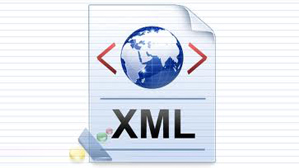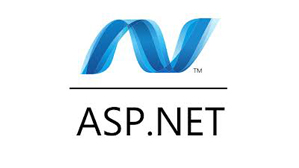Technology has moved on
very vast from simple basic HTML coding to the coding of complex
logic for creating high end apps. As the common people are getting
more and more fond of gadgets and other forms of technological
conveniences. The real essence of coding and programming are best
understood by the engineers or the developers only, and the common
man just enjoys the technological boom as the end user. However, even
for the end user and especially for the programmer it is very
important to stay updated with the latest of programming languages in
the IT industry. While for the common man its just enough to know
the names, ofcource, the programmer needs to be an expert on coding.
Here check the current 15 programming languages that are mostly used.
1) SQL
SQL is a one type of
special-purpose programming language that is used for managing data
in database management system (RDBMS). SQL compromises a data
manipulation and a data definition language. It is based on algebra
and tuple relational calculus. The SQL programming is very much in
demand, so is the programmer who has profound knowledge of this.
Java language basically
compromises different computer software products. It carries the
specification of Sun Micro systems. After merging with Oracle
Corporation, the two together provide a system used in the
development of application software that is deployed in a computing
environment with cross-platform.
JavaScript is a computer
programming language which was originally employed along as a part
of web browsers. The purpose of this was to initiate client-side
script interaction with the users. Other applications were also
facilitated such as control over the browser, alteration of the
displayed document content, communicate asynchronously. Currently a
Java script has become most popular in development of games and
desktop applications.
4) C++
C++ is a general-purpose
programming language. It is most often considered as the
intermediate-level language. It is also one of the most commonly used
programming languages that is used in a variety of operating systems
or other hardware. It is majorly used in the development systems
software,
application software, embedded software, device driver, and
client applications, high-performance serve and gaming software,
etc.
5) XML
XML is the acronym of
Extensible Markup Language that describes a set of rules meant for
encoding of documents in a format that readable to both human and
machine. XML is preferred as a programming language because it
supports simplicity and high usability over the Internet. It also
forms the basis for RSS and XHTML.
6) C#
C# is considered as a
multi-paradigm programming language, developed by Microsoft as apart
of its .NET initiative. It encompasses programming discipline data
can be identified by the following characteristics:
7) Python
Python is a
general-purpose which is widely used for high-level programming. The
language mainly emphasis on code readability by allowing the
programmer to express the language syntax in fewer lines of code.
This makes the language more code readable as compared to C language.
Python is being used even by notable players like Google and NASA
owing to a high level of clarity in the codes. The very popular data
management software drop box has been written using this language.
8) C Language
C as a programming
language is perhaps the most heard one. It is kind of all time
programming languages. In fact many other programming languages such
as C#, D, Jave, Go, JavaScript, LPC, Limbo, Perl, Python, PHP etc has
been borrowed from Java directly or indirectly.
9) Perl
Pearl identifies a set of
two high-level general-purpose programming languages called Perl 5
and Perl 6. These are two interested and dynamic language that shares
features common with another programming language such as C, AWK,
and sad. The language supports powerful text processing facilities
that too without interruption of any data-length limits. In the 90s,
Perl got very popular for its ability to create CGI scripts. Apart
from being used in web development, this is also used for building
system administration, desktop apps, games, Bioinformatics, etc.
10) HTML
Hypertext Markup Language
(HTML) is the most integral markup language that is used for creating
web pages. Like XML, it also readable by both human and machine. The
coding for website design is done using the HTML tags. The tags are
not displayed in the browser but the browser displays the website
reading the HTML document only.
11) PHP
PHP is the server-side
scripting language, which also holds its significance in domain web
development. But it also used sometime as the general-purpose
programming language. The large number of websites that deal with
every day are all powered by PHP only. In fact there are around 20
million websites that run on PHP including Facebook and Wikipedia.
12) Objective-C
Objective-C is an
object-oriented, general-purpose programming language. It is almost a
30 year old programming language. Apples’ iOS and OS X are
programmed using this language. The language is very much in demand
in the programming industry.
AJAX acronym for
Asynchronous JavaScript And XML. As clear from its name, this
programming language that is used for creating asynchronous web
applications. Using Ajax application data can be sent or retrieved
from a server asynchronously that too without disturbing or altering
the display and behavior of the existing page.
ASP.NET, developed by
Microsoft is a Web application framework . It is used in the Web
development, especially in the creation of dynamic Web pages. The
ability of ASP.NET to create dynamic websites and web applications
keep it very popular among developers.
15) Ruby
Ruby is almost a 20 years
old scripting language that is still very much in demand for features
like dynamic and general-purpose. It is an object-oriented
programming influenced by the syntax of Perl, Eiffel and Lisp. The
language supports multiple programming paradigms and has a dynamic
type system and automatic memory management.






























